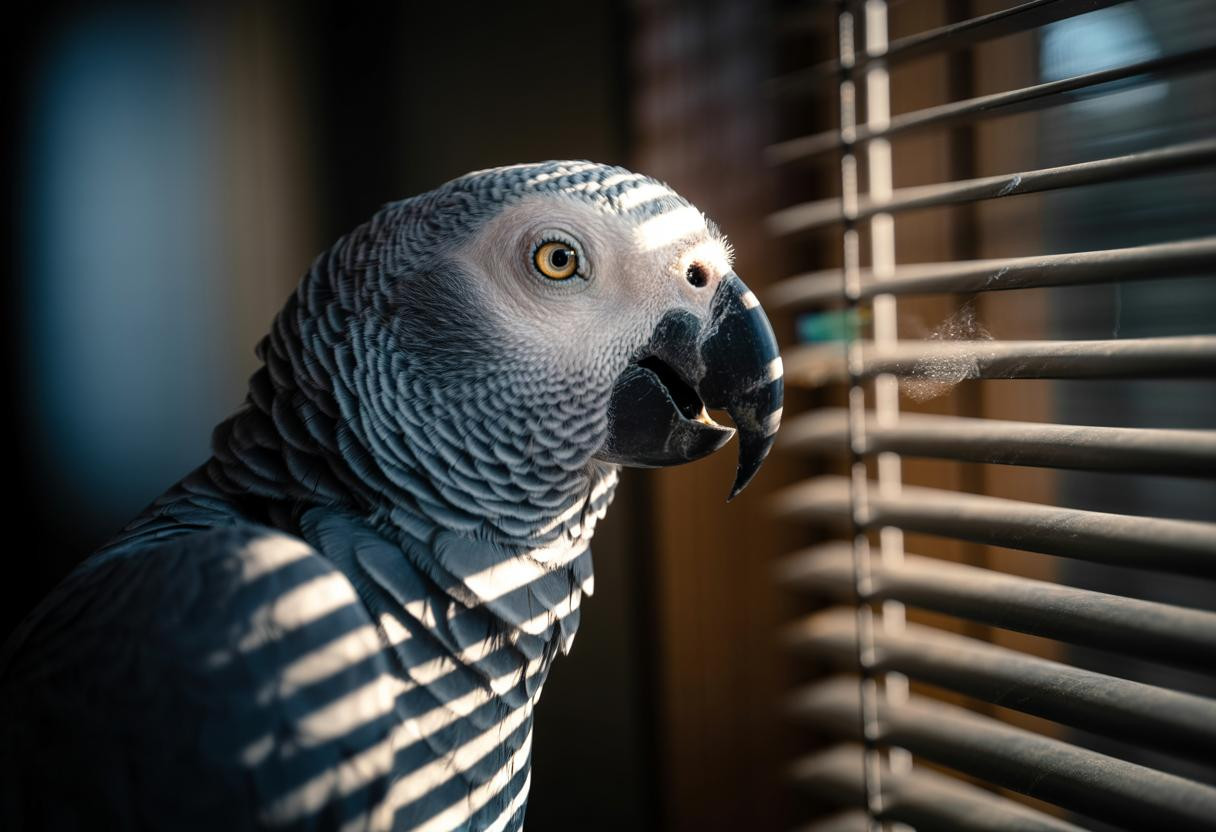When Emma Wilson heard her African Grey parrot, Pepper, suddenly exclaim “Don’t open that drawer!” in her husband’s voice one afternoon while home alone, she froze. No one had said those words that day, and her husband was away on business. Was this just random mimicry, or something more? The phenomenon of parrots repeating phrases seemingly out of nowhere straddles a fascinating line between the merely strange and potentially meaningful.
The science behind unexpected parrot phrases
Parrots possess extraordinary mimicry abilities rooted in specialized neural pathways remarkably similar to those found in humans. Research shows these birds have brain regions analogous to our speech centers, a case of neural similarities with humans that evolved independently over millions of years.
“When a parrot suddenly repeats something no one present has said, they’re often drawing from their extensive memory bank,” explains Dr. Melissa Sargent, avian cognition researcher. “These birds can store hundreds of phrases, sometimes remembering things their owners have completely forgotten saying.”
When mimicry becomes a potential clue
In several documented cases, parrots have provided unexpected evidence in criminal investigations. The most famous occurred in 2016 when a Michigan woman’s African Grey repeatedly shouted “Don’t shoot!” in what family members recognized as her murdered husband’s voice.
Parrots develop complex mimicry and complex social behavior patterns that sometimes reveal surprising insights. They’re like feathered recording devices with selective playback features—storing what interests them most and reproducing it when something triggers that memory.
The “vocal keyboard” phenomenon
Recent discoveries about parrot vocal learning mechanisms reveal they use what scientists call a “vocal keyboard” where specific neurons correspond to particular sounds. This sophisticated system explains why their mimicry can be eerily accurate, capturing not just words but intonation and emotional context.
Factors that trigger unexpected parrot speech include:
- Environmental cues resembling earlier contexts
- Emotional states similar to when they first heard the phrase
- Visual stimuli connected to original learning circumstances
- Random neural firing during sleep or rest periods
Cognitive capabilities beyond mere mimicry
Understanding what makes parrots talk requires examining their brain structure and cognitive function. “Parrots don’t just parrot,” notes Dr. James Rodriguez, veterinary neurologist. “They’re processing information through sophisticated neural networks that filter, store and retrieve vocal patterns based on relevance and emotional significance.”
Like librarians organizing an extensive sound archive, parrots categorize vocalizations based on contexts, emotions, and consequences—then retrieve these recordings with surprising specificity.
Therapeutic insights from parrot speech
The unexpected phrases parrots produce aren’t just curiosities—they’re offering valuable therapeutic applications for speech disorders. Researchers are studying how parrots process and produce speech to develop new approaches for humans with communication challenges.
What parrot speech research has revealed:
- Novel insights into motor planning for speech production
- Alternative pathways for language acquisition
- The importance of social reinforcement in communication
Is your parrot trying to tell you something?
When your parrot suddenly says something unexpected, consider it may be neither purely random nor supernatural. These intelligent creatures exist in the fascinating middle ground of cognition—not quite understanding language as we do, yet processing it far beyond simple mimicry.
The next time your feathered friend says something seemingly out of nowhere, it might be worth paying attention. Whether creepy coincidence or meaningful clue, it’s a remarkable window into the complex cognitive world of these extraordinary birds.
